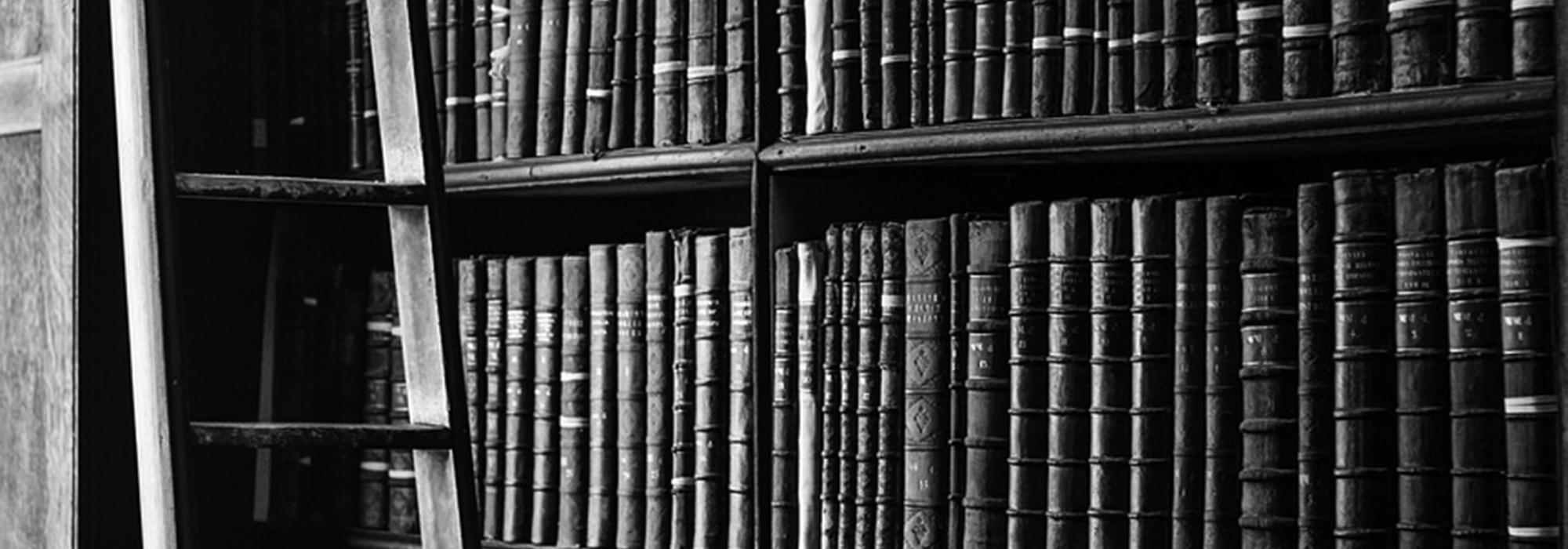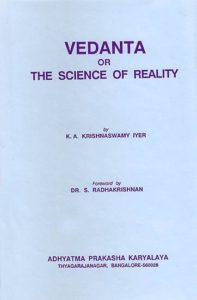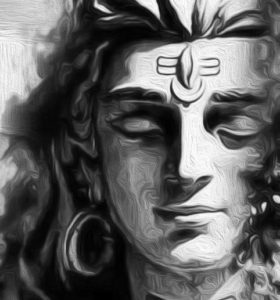As instructed by K Ramachandra Rao, I went to meet K A Krishnaswamy Iyer. During those days, he lived in his own house on 5th Cross, Basavanagudi (behind the house named ‘Chidvilaasa’). I went to his house at around three in the afternoon. Soon after I knocked the door, he opened it himself and ushered me inside. The room was sparsely furnished without a hint of ostentation. A bookshelf, two floor mats, a couple of cushions, and a violin – this is all I saw.
I told him that I had visited him upon the advice of Sri K Ramachandra Rao and introduced myself. One of my relatives, out of his deep love for music, had befriended Krishnaswamy Iyer. He had told me about Iyer. The moment I mentioned my relative’s name, Iyer’s face blossomed. With great affection he took me inside, made me sit down, and began asking me questions about my past and present. As soon as I mentioned that my hometown was Mulabagal, he asked, “Do you know the purohita Ramachandracharya then?” I said, “I know him very well; he’s a great friend of my father; he comes home twice or thrice a week. He plays the violin really well.” In response he said, “Just like me, Ramachandracharya too hails from Kaveripattinam. We’re childhood friends. We learnt the violin together. How’s he doing?” He enquired about his childhood friend. Thus I was able to gain the confidence of Krishnaswamy Iyer with the help of three individuals: Ramachandra Rao, my elderly relative, and my father’s friend.
Then I explained the reason for my visit. [See the episode on K Ramachandra Rao for the context.] With great curiosity, Iyer took the sheet on which I had written my poem and read it thoroughly. He said, “To correct this, we’ll have to meet for three or four days. Can you come here in the afternoon?” Overcome with gratitude I said, “Ah! Surely I will come. Your grace is the only fortune I need!”
Placing my poem aside, he asked me, “Which are the English poems you’ve read?” After I listed out five or six of the poems I had read, he said, “You haven’t read much of Byron.” I said yes. He immediately pulled out an anthology of Byron’s poetry and began reading extracts from Childe Harold’s Pilgrimage. “See how naturally the end rhyme appears here! See how powerful the words are! Notice the kind of clever usage the poet has made here for the sake of the accent!” he said, as he showed me the relevant portions. Then he asked me to read aloud some sections of Don Juan. “If you want such force in your poetry, study Byron well,” he said.
When I went the next afternoon, he made me read selections from the poetry of Pope, Southey, and Tennyson. He then showed me the mechanics of composing poetry in English.
Just like Ramachandra Rao, Krishnaswamy Iyer also composed poetry in English. Ramachandra Rao used to compose Acrostic poetry, which needed a great deal of skill and command over the language. [In an acrostic poem, the first, last, or other letters in a line spell out a particular word or phrase.] Krishnaswamy Iyer mostly wrote sonnets. Rao’s poetry had great descriptions; Iyer’s poetry had profound content.
Amid our discussions, the corrections to my poem were also done. Iyer made me rewrite several lines of my poem. After polishing it for three or four days, he said, “This poem is not merely ready for publication but it should be published. Everyone will agree with me. And if someone criticizes it, I’ll deal with them.” He encouraged and reassured me thus.
After this, I often visited Iyer to the extent that it became a routine. When he came to know of the little Sanskrit I had learnt and about my humble interest in Vedanta, he developed a motherly affection towards me.
I have heard that just like me, quite a number of high school and college students would visit Iyer’s house and he would encourage them and teach them literature. After some time he joined the education department and served as a high school headmaster in many places including Chikkaballapur, Tumkur, and Chikmagalur. Even in those high schools, he taught English literature. His intention of teaching was not merely that the students should pass their exams but that they should develop a taste for literature. His discussions in class were never restricted to the narrow realm of the textbook lessons. His enthusiasm stemming from his joy-filled experiences was instrumental in introducing scores of great poems to students, thus broadening their horizons of literature.
Krishnaswamy Iyer was not the kind of person who was interested in being part of large groups. He was not one to climb onto a stage and give a bombastic speech with words flowing like a gushing river. His thoughts were restricted to a small assembly of likeminded friends. Wherever he lived, those who were keen in learning, connoisseurs, and cultured folk of that town came to him of their own accord. The wise and the cultured were naturally attracted to him because of three of his virtues. First, his constant quest for higher truths. Second, his deep love for music. Third, his easy-going, fun-loving, and courteous nature.
Iyer had a lasting interest in the study of Vedanta. As early as in 1906-07, along with his friend Dr. Srinivasa Rao, he conducted a study group every Sunday in Hiriyanna’s choultry near the Municipal Park. It was a time when Swami Vivekananda had raised the flag of victory in the US and had given the clarion call of Vedanta. It was also a time when the trend of the English-educated intellectuals’ disdain for their own culture and faith was on the decline. Among those who grabbed that opportunity to try and revive Sanatana Dharma, in Bangalore Krishnaswamy Iyer and Dr. Srinivasa Rao were the most prominent. They collaborated to write and publish an English translation of Sri Vidyaranya’s Panchadashi, a work that is unanimously regarded as an authority among the literature on Advaita Vedanta.
Krishnaswamy Iyer used to engage in intellectual discussions with European philosophers and thinkers by writing letters. In the works of the famous German scholar and writer Paul Deussen, Iyer selected passages that were ambiguous, wrote a commentary on them, and then sent it to Deussen. He wrote back saying that Iyer’s arguments were based on sound reasoning and agreed that Iyer’s comments were pertinent. In his arguments, Iyer had explained in detail the path of Avastha-traya [three states of consciousness] – jagarita [wakeful], svapna [dream], and sushupti [deep sleep] from the Mandukya Upanishad.
When I was studying under the tutelage of Sri Virupaksha Shastri of the Shankara Matha, I saw Krishnaswamy Iyer often. He would raise several fresh questions and bring to my notice many subtleties in the texts, shedding light on them with his brilliance. He was an independent thinker. “This is what the commentary says,” or “The tradition avers thus,” or “This is the lesson taught by the guru” – statements like these would not be enough to satisfy him. He would ask, “What does your mind say? What do you think about it?” Insights that were absent in commentaries and glosses, details that weren’t clear in the tradition, or the things that didn’t appear in the guru’s lectures – these things struck the original mind of Krishnaswamy Iyer. He was firmly rooted in experience, not in textual references. He sought meaning for the words of Vedanta in the light of universal experience.
In his magnum opus, Vedanta, or The Science of Reality, he methodically records his siddhanta [settled opinion, principle], which he derived after years of contemplation, careful examination of experiences, and his special skills of reasoning. Whatever doubts or suspicions that may arise in one’s mind matters of Vedanta, he will find a sensible and well-reasoned response in that book. Several academic institutions have deeply respected the book. [Krishnaswamy Iyer’s book Vedanta, or The Science of Reality is one of the finest expositions on Vedanta, the culmination of all Indian philosophical thought. His lucid writing introduces without any doubt or ambiguity the concept of avastha-traya from the Upanishads. It is a brave work that shows with a great deal of clarity how Vedanta is not a doctrine but in fact a science. This was further developed by Iyer's student Y Subramanya Sharma, who later became Swami Satchidanandendra Saraswathi.]
In our country, on average, there are—or there used to be—at least four people in every city having an abiding interest in philosophy and in seeking higher truths. Wherever Iyer lived, such people would gather around him. Every evening, a small assembly of like-minded people would come together and discuss—among other topics—Bhagavad-Gita. Upanishads, Ramayana, and Mahabharata. In Iyer’s house in Basavanagudi, such discussions took place on a stone bench. For that reason Bellave Venkatanaranappa had named the bench ‘The Philosopher’s Stone.’ This has two meanings – 1. A philosopher’s stone and 2. A touchstone that converts base metal into gold.
Krishnaswamy Iyer’s love for music too was inborn. You could say that the violin was the breath outside his body. His music practice was merely for self-satisfaction and joy. He didn’t have a strict practice regimen like a professional. He had not learnt the instrument methodically in order to play at a public concert. He also didn’t have the physical attributes required for such strenuous and continuous practice. His was a nature that enjoyed and cherished the beautiful emotions arising from the depths of rasa. In every major raga, he chose the most exquisite of phrases and played only those.
He had the great magnanimity to grasp the essence of musical performances of all, while thoroughly enjoying them. He could listen to young children singing, time and again, and find great happiness. And as for great musicians, he had the utmost regard.
About twenty years back, Anantashastri was one of the well-known Carnatic singers in Bangalore. When Anantashastri was a schoolboy—perhaps while at high school—he had been a student of Krishnaswamy Iyer. Even after he grew up and became a renowned artiste, Anantashastri had great reverence for Iyer, who he still regarded as a guru. As for Iyer, he had motherly love towards Shastri; he would address Shastri in the singular, in a familiar tone. Once when Krishnaswamy Iyer was sitting in his room playing his violin, Anantashastri came there. Upon seeing him, Iyer said, “You’ve come at a right time, my fellow! My mind is continually drawn towards Kedaragowla.” Shastri said, “I’m ready. With your permission.” Meanwhile, a call came from within the house reminding him that it was time for his evening Sandhya-vandanam. Soon, upon his orders, the four or five of us who were present there, dined at his house and then sat down to listen to the music. It must have been around 8 pm when it began: Kedaragowla raga alapana, an expansive tana, a kriti—probably Sri Nilakantham—followed by the svarakalpana. By the time it was over and we glanced at our watches, it was nearly eleven. It has been thirty years since, but I feel the strains of the Kedaragowla I heard that evening resonating in my ears even now (in 1953). When Shastri finished, Iyer gave him a big hug and praised his music. “What shall I do, my man, at this hour I can’t even procure a garland of flowers!” he said in dismay. Then he sent someone inside to go to the prayer room and bring a flower that had been offered to the deity; Iyer gave that flower to Shastri, who said, “I don’t wish for any greater reward than this.”
I have already mentioned about Krishnaswamy Iyer’s intimate knowledge of English literature and his awareness of the subtleties and beauty of that language. He had intimate knowledge of Sanskrit literature as well. Brahmasri Motaganahalli Shankarashastri was the most prominent among the Sanskrit scholars who Iyer greatly admired. He was one who had deeply studied works of Sanskrit literature as well as Vedanta. When Krishnaswamy Iyer and Dr. Srinivasa Rao took up the formidable task of translating the Vedantic work Panchadashi into English, Shankarashastri greatly helped them. Iyer often praised Shankarashastri as a person who had a brilliant, original mind; he was never one to blindly follow tradition. Shastri was a man of fresh insights and original opinions; he examined ideas without any prejudice. Iyer used to praise his brilliance and said that his words could be taken as a reliable reference.
Another philosopher who Iyer greatly admired in matters of Vedanta was Anantappa. It is said that he hailed from the Pattegara jati [typically people who brew alcohol]. He had an intuitive awareness of truths that Iyer and Shastri often praised. Anantaswami’s matha was situated to the East of Subedar Chatram Road; to the Northwest of Gandhi Bazaar.
Iyer had great scholarship in Tamil as well. He loved Kannada as if it were his mother tongue. On and off, he composed songs and stories in Kannada. There is a song sung by the followers of the Dvaita school, mocking the advaitis:
ಶಿವ ನೀ ಹ್ಯಾಂಗಾದ್ಯೋ—ತಾಯಿ ಗಂಡ
ಶಿವ ನೀ ಹ್ಯಾಂಗಾದ್ಯೋ ||
ಶಿವನೀನಾದರೆ ಶಿವನರ್ಧಾಂಗಿಯು
ನಿನಗೇನಾಗಬೇಕೋ || ತಾ.—ಗ.||
[How did you become Shiva? O incestuous dolt!
How did you become Shiva?
If you are Shiva, how is Mother Parvati
related to you? Does she become your wife?]
In response, Iyer composed this song, which presented the Advaita view:
ಶಿವ ನೀ ಹ್ಯಾಂಗಲ್ಲೋ—ಮರುಳೆ
ಶಿವ ನೀ ಹ್ಯಾಂಗಲ್ಲೋ
ಶಿವನೆಲ್ಲವಾಗಿರೆ ಶಿವನರ್ಧಾಂಗಿಯು
ಶಿವನೇ ಅಲ್ಲವೇನೋ || ಮರುಳೆ ||
[How are you not Shiva? O fool!
How are you not Shiva?
If Shiva is everything, then his better half
is Shiva himself, isn’t it? O fool!]
I have written the words here as I remember it. Now I regret that I did not write it down correctly at that time.
Krishnaswamy Iyer had written a few satires in Kannada. I had the good fortune of presenting one of those satirical plays once. In that skit, he had written about the typical fights of our villagers and how they get caught in the web of lawyers and struggle. He had described all this in a comical vein.
Iyer used to visit village jatras and parishes [village fairs] and he greatly enjoyed watching the kolata dance [men and women dance with a pair of sticks, one held in each hand]. I vividly remember him reciting the following lavani [a song that accompanies the dances in the village fairs]. It is a lavani from the Bellave jatra.
ಮುಕ್ಖಣ್ಣನೆಲ್ಲರೂ ಕೊಂಡ್ಹಾಡಿರೋ—ಸರ- |
ಣಿಕ್ಕೆ ಸೋಮೇಶನ್ನ ಕೊಂಡ್ಹಾಡಿರೋ ||
ಮುಕ್ಖಣ್ಣ ಮಾರಣ್ಣ ಬುಕ್ಕಣ್ಣ ಬೀರಣ್ಣ |
ಶಿಕ್ಹಣ್ಣ ಸಂಗಣ ಲಕ್ಹಣ್ಣ ಲಿಂಗಣ್ಣ |
ಭೊಜ್ಜೆಯ ಯಿಘ್ಣೇಶ ಸರಣೂ—ನಿನ್ನ |
ಗೆಜ್ಜೆಯಕಾಲಿನ ಸದ್ದೀಗೆ ಸರಣೂ ||
ಕಜ್ಜಾಯ ನೈವೇದ್ಯ ತರುವೇ—ನಮ್ಮ |
ಹೆಜ್ಜೆಯ ಕೋಲಾಟಮಾಡಿಸೊ ಗುರುವೇ ||
[Praise Shiva, one and all!
We seek refuge in the Destroyer of troubles!
We seek refuge in the sound of Your anklets!
We bring You sweets in offering!
Make our feet dance, O great teacher!]
While reciting this lavani, Iyer would imitate the pronunciation of the villagers, their tone of voice, making hard sounds in place of soft sounds, and so on, apart from mimicking their gestures and making all of us laugh out loud. At the same time, he praised the honest devotion of the villagers towards their chosen deity and their simplicity of heart.
Iyer’s conversations would be filled with fun and humour. He always wanted to be surrounded by friends. He must enquire their joys and sorrows, their successes and their troubles. He spoke soft words of reassurance to those who were oppressed by travails and offered firm words of wisdom to those who were swelling with pride. He wanted to spend time doing noble deeds. But whatever be the context, it must not be bereft of fun and joy.
Krishnaswamy Iyer’s life was pure and peaceful in every dimension. He adhered to traditional practices and rituals as far as he could. He never skipped his daily sandhya prayers. He was a wonderful host, always treating his guests with great respect. He had experienced all the pains of being a family man. Whenever he met someone who was a victim of life’s vicissitudes, he was naturally compassionate towards them. Despite all this, since his inner focus was always on the Supreme and on the highest truths, his mind, words, and deeds were joyful. He often repeated this shloka, which he reflected upon as a mantra:
ದೇಹಾಭಿಮಾನೇ ಗಳಿತೇ
ವಿಜ್ಞಾತೇ ಪರಮಾತ್ಮನಿ |
ಯತ್ರ ಯತ್ರ ಮನೋ ಯಾತಿ
ತತ್ರ ತತ್ರ ಸಮಾಧಯಃ ||
[As the attachment to the body vanishes,
one becomes aware of the Supreme
Wherever the mind travels of its own accord,
at every step, at every moment, one attains samadhis]
Among those who were fortunate to spend a few moments with him, none could have failed to experience his sense of humour, his courteous nature, or that lasting peace resulting from wisdom.
This is the second chapter of D V Gundappa’s magnum-opus Jnapakachitrashaale (Volume 1) – Sahiti Sajjana Sarvajanikaru. Translator’s notes in square brackets. Thanks to Sandeep Balakrishna for his astute edits. Thanks to Shashi Kiran B N for his review of the translation and suggestions for improvement.

















































Comments